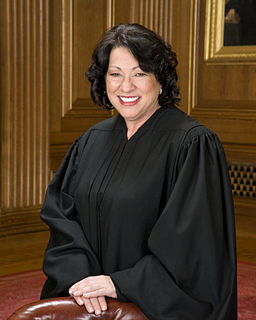Sotomayor tangles even with Ginsburg in court opinions

Justice Sonia Sotomayor.
As she nears her fifth anniversary on the court, Justice Sonia Sotomayor has become increasingly confident, using her opinions to highlight issues like racial bias and human rights, even when it brings her into conflict with the rest of the justices.
According to the New York Times, Sotomayor “has found her voice” in opinions on human rights abuses, the death penalty and affirmative action. In the current term, the Times says, Sotomayor “has staked out positions that have led to testy exchanges with colleagues across the ideological spectrum,” including Justice Ruth Bader Ginsburg.
Ginsburg joined Sotomayor’s dissent in Schuette v. Coalition to Defend Affirmative Action, the ruling last month upholding Michigan’s ban on affirmative action. Sotomayor read aloud from her dissent, something she did for the first time. According to the Times, “Several of her colleagues seemed tense, impatient and grim as she spoke.”
Sotomayor’s dissent touched on her memory of growing up as a Puerto Rican in New York City. “Race matters to a young woman’s sense of self when she states her hometown, and then is pressed, ‘No, where are you really from?’ regardless of how many generations her family has been in the country,” she wrote. “Race matters to a young person addressed by a stranger in a foreign language, which he does not understand because only English was spoken at home.”
In the dissent, Sotomayor called the views of Chief Justice John G. Roberts Jr. “out of touch with reality.” (The Times notes that Roberts was was “raised in middle-class comfort in Indiana.”) Roberts responded that it is not out of touch “to conclude that racial preferences may themselves have the debilitating effect of reinforcing precisely that doubt, and—if so—that the preferences do more harm than good.”
The Times says Sotomayor and Ginsburg have also tangled as they traded “barbed footnotes.” In a January concurrence, Sotomayor said the court had created a “deep injustice” by making it harder to sue foreign companies in American courts for overseas human rights violations. Ginsburg responded that Sotomayor had mischaracterized the trial record and misinterpreted precedent. In a 2012 dissent, Sotomayor said the majority had ignored its precedent. Ginsburg responded that Sotomayor was “inventing a ‘longstanding rule’ that never existed.”



